


Trading in your car can be stressful and confusing. Many people worry they won’t get a fair price from dealerships. It’s easy to feel lost if you don’t know how trade-in values are determined or what steps to take beforehand.
You might leave money on the table without the right preparation. Many sellers accept the first offer out of frustration or lack of information. This can lead to disappointment and regret when realizing a higher value was possible with a better approach.
There’s good news—you can maximize your car’s trade-in value by following a few smart strategies. Simple actions can help you stand out and negotiate confidently. This blog will show you how to get the best price for your car.
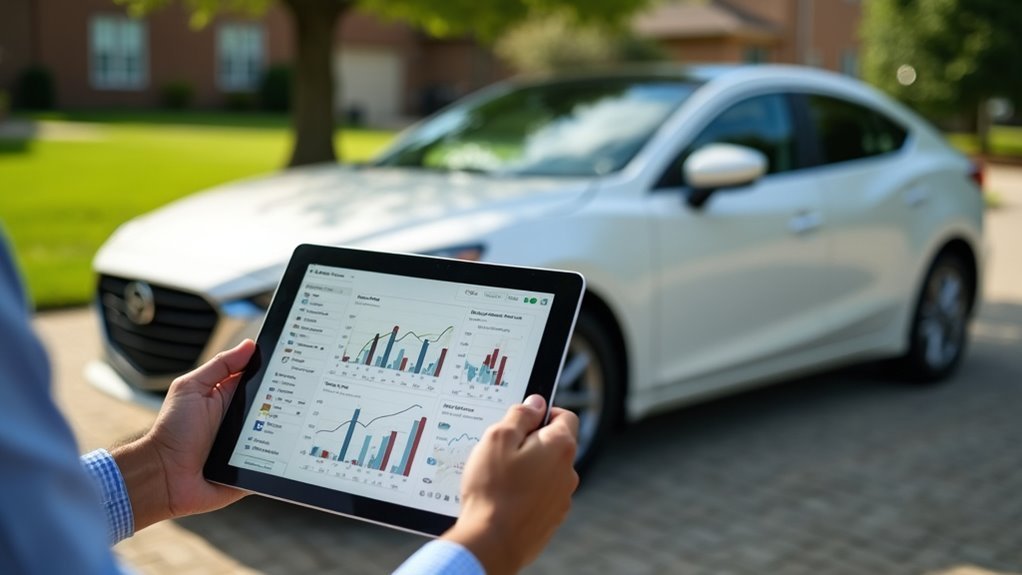
Auto Loan Credit Score & Reports
Before you negotiate, know your car’s current market value. Use trusted tools like Kelley Blue Book, Edmunds, or NADA Guides. Enter your car’s details to get a price range. Always check more than one source for better accuracy. Look at local listings for cars like yours. Note prices from both dealers and private sellers. If you compare these numbers, you can see what people actually pay.
This information helps you set a fair asking price. If someone offers less, you can use your research to explain why your price is fair. Understanding market value research is similar to reviewing your credit report—both require checking multiple sources and verifying information to ensure you get the most accurate numbers before making important financial decisions. Just as payment history can have a major impact on your credit score, knowing your car’s true value can significantly influence your negotiation outcome.
Gathering all maintenance and service records helps prove your car was well maintained. Dealers and buyers trust vehicles with clear records. Service receipts and logs show regular oil changes and inspections. Proper documentation can increase your car’s trade-in value. Organized records build a positive history and show you followed manufacturer guidelines. If you used different service centers, combine all records into one file.
This proof can help you negotiate a better trade-in price. If you cannot find some records, ask your service shops for copies. Just as you would review loan documents for unexpected costs, thoroughly presenting your car’s maintenance history can prevent surprises and support a stronger trade-in offer. Keeping comprehensive documentation is similar to the clear APR disclosure required by lenders, as both practices boost transparency and trust in financial or trade transactions.
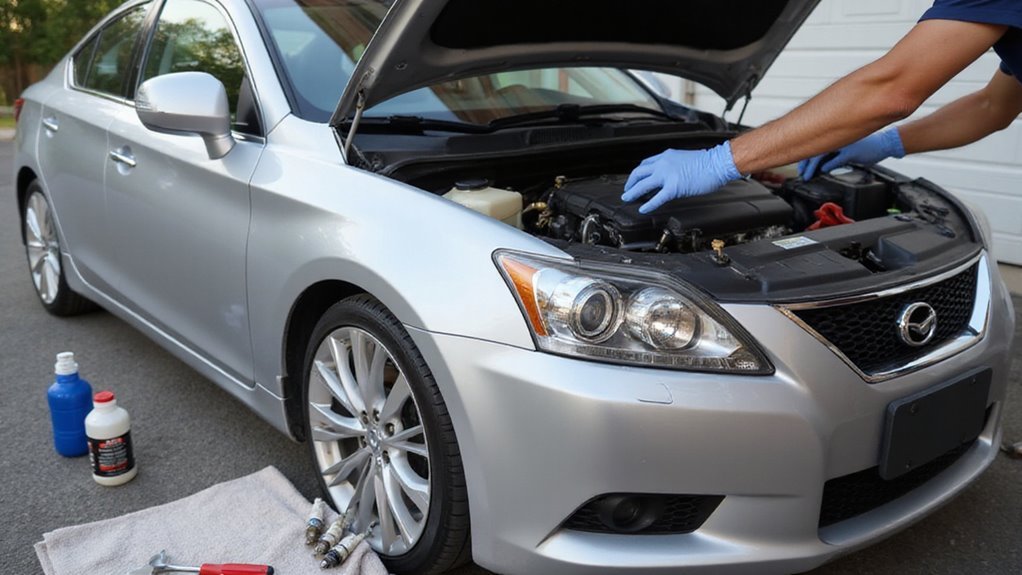
Check Your Credit Scores & Reports
Fixing small issues and doing regular maintenance helps your car’s value when you trade it in. If you handle minor repairs, dealers see you have cared for your car. Simple tasks, like changing bulbs or wiper blades, make your car look well-kept.
Good tires and topped-up fluids can boost fuel efficiency, which buyers notice. Updated maintenance can sometimes lower your insurance costs. Taking care of minor repairs and maintenance can also help you avoid unexpected costs related to collision coverage if you are ever involved in an accident. Use this checklist for easy ways to add value:
| Repair/Maintenance | Financial Benefit |
|---|---|
| Replace air filter | Improves fuel efficiency |
| Fix minor dents | Increases trade-in value |
| New windshield wipers | Enhances safety appeal |
| Inflate tires properly | Better fuel economy |
Regularly reviewing account statements and keeping up with scheduled maintenance helps you avoid surprises that could affect your car’s value at trade-in.
A clean car looks more valuable to buyers and dealerships. Clean cars often get higher trade-in offers. Wash and wax the exterior to make it shine. Use good cleaning tools like microfiber cloths and car shampoo. Vacuum the interior well. Pay attention to dashboards, cup holders, and door panels. Clean the glass with streak-free products.
Remove stains from the seats if you notice any. Deodorize the cabin to remove bad smells. If you keep your car clean, you show that you took care of it. A small effort in cleaning can help you get a better price. Paying attention to details, like maintaining accurate records, can further demonstrate your commitment to responsible ownership and boost your car’s perceived value. Additionally, being proactive about your car’s appearance is similar to ongoing monitoring services for your credit, where regular maintenance and attention can make a significant difference in perceived value.
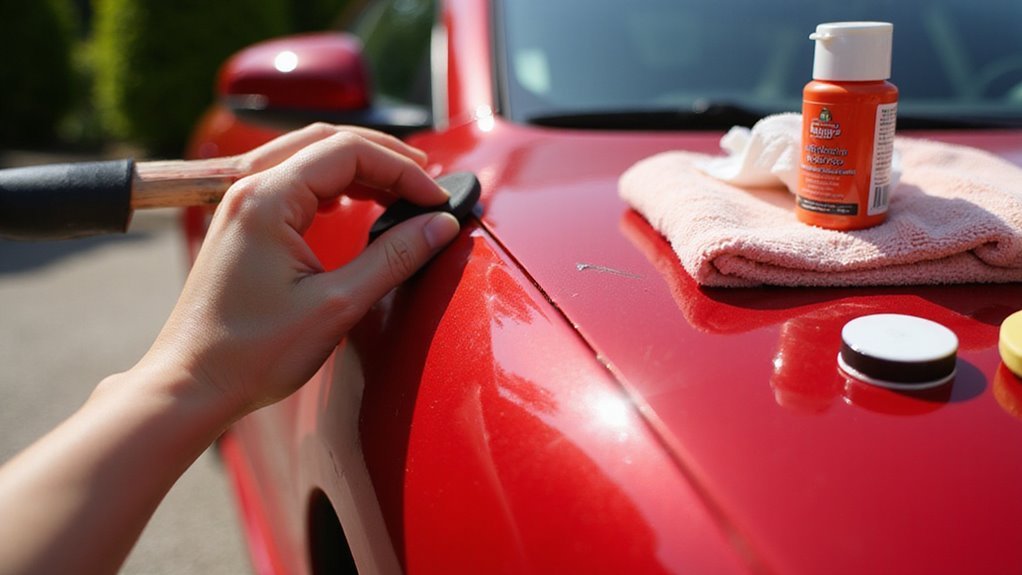
Don’t overlook small cosmetic flaws like paint scratches, minor dents, or broken lights—they can quickly lower your car’s trade-in offer. By repairing these issues, you make your vehicle appear well-cared-for and boost its perceived value. Investing a little now can pay off with a better deal at the dealership.
Just as addressing errors on your credit report can quickly improve your financial standing, taking care of minor visible issues on your car can lead to a noticeably higher trade-in value. Paying attention to your car’s appearance is similar to how credit monitoring services help maintain your financial profile by catching issues before they become bigger problems.
Fixing paint scratches helps keep your car looking well-maintained. Scratches can lower your car’s trade-in value. If you see light scratches, use a DIY repair kit or touch-up paint from the manufacturer. If scratches are deep, hire a professional for better results.
Always clean the area well before applying any product. If you repair scratches yourself, you may save more than what a dealer would deduct. Proper care of paint can help you get more money when trading in your car.
Minor dents can lower your car’s trade-in value. Dealers might think dents mean poor care and offer less money. You do not always need a body shop for small dents. Local dent specialists or DIY kits can fix many issues. If you repair dents, your car may look better and sell for more. Dealers want cars that look well-kept. Fixing dents can help your car stand out and get a better offer.
Broken or dim lights lower your car’s trade-in value. Dealers check every light on your vehicle during appraisal. Non-working headlights, taillights, or signals can raise concerns about other maintenance issues. You should replace any broken bulbs before your visit. If you see a dashboard warning, fix the light before the appraisal.
Check all lights, including brake and reverse lights. New bulbs are low-cost and show you care for your car. Working lights make your car safer and more appealing to buyers. If you fix faulty lights, you may get a better trade-in offer.
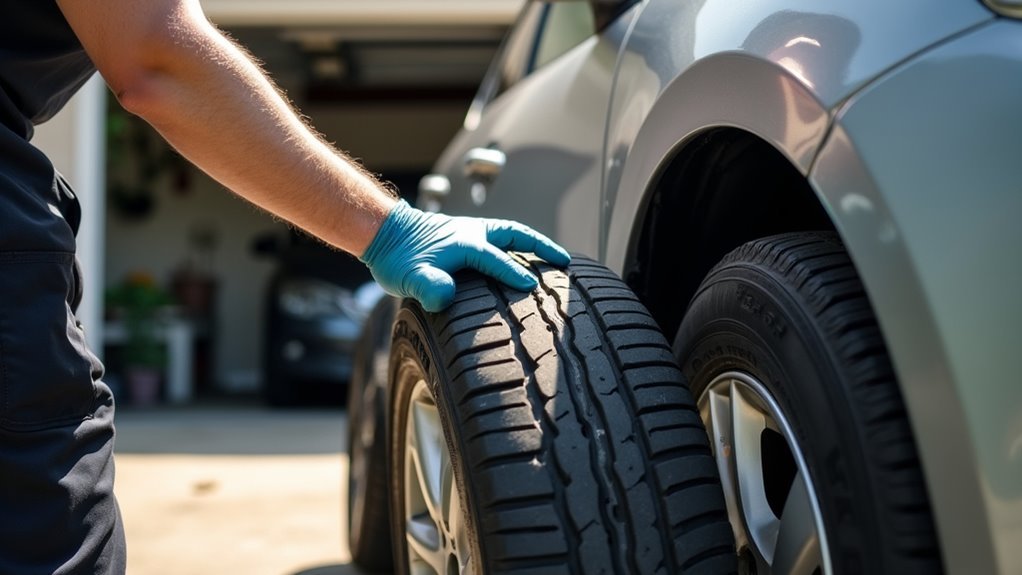
You should replace worn-out tires before trading in your car. Appraisers notice tire condition during their inspection. Worn or bald tires suggest poor maintenance. Dealers will lower your offer if tires need replacing. New, affordable tires can increase your car’s value. All four tires should have good tread and proper air pressure. If tires are unevenly worn, replace them to avoid losing money.
Good tires make your car safer and show you cared for it. This simple step can help you get a better trade-in deal. Just as regular credit monitoring helps maintain your financial health, keeping your car’s tires in good condition signals responsible ownership to potential buyers. Paying attention to maximum security for your credit is similar to ensuring your vehicle has quality tires—both reflect a commitment to protection and long-term value.
Make sure all your car’s features and electronics work properly. Buyers expect every button and system to function. Test the air conditioning, navigation, windows, seats, and infotainment system. Fix any problems before your appraisal if possible. Use an OBD-II scanner or ask a mechanic to check for hidden issues. Address warning lights or sensor problems right away. If you repair small issues now, your car will seem well cared for.
This can help you get a better price at trade-in. Taking proactive steps to address even minor issues demonstrates responsible ownership, similar to how regular credit monitoring helps identify and fix problems early in your credit profile. In the same way, addressing errors or warning signs promptly can prevent bigger issues from lowering your car’s perceived value, just as fixing mistakes on your credit report protects your credit score.
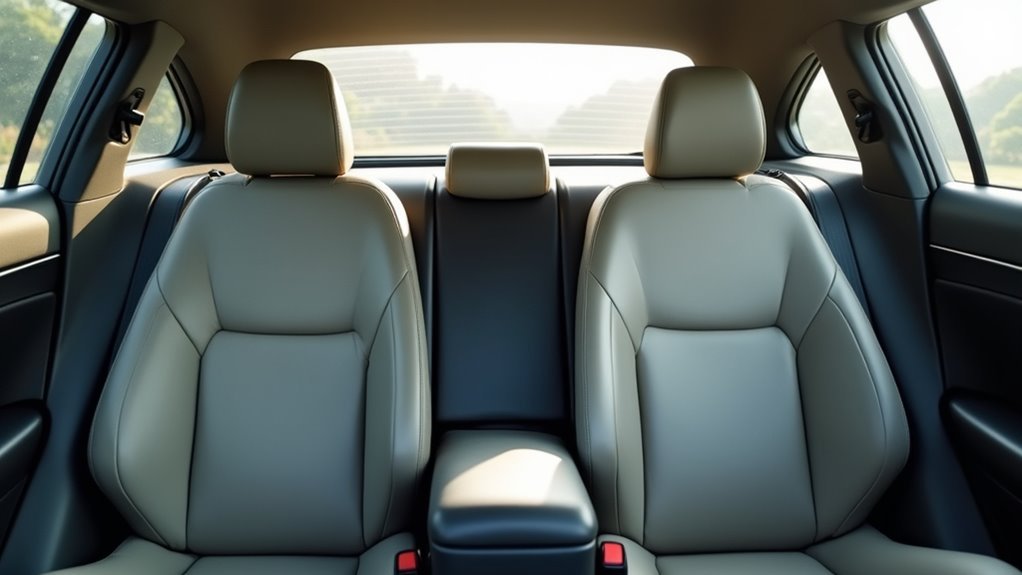
You should remove all personal items and customizations before your car appraisal. Personal belongings can make the car seem neglected. Dealers prefer cars that look neutral and clean. Aftermarket parts like tinted windows or custom wheels may lower your car’s value. If possible, restore the car to its original condition.
Keep the interior and trunk empty to show the car is well cared for. A factory-standard car attracts more buyers and could get you a better trade-in offer. Removing customizations and personal items is similar to maintaining a strong credit history, as both help present your assets in the best possible light for favorable financial outcomes.
Invest in professional detailing to make your car stand out to appraisers and buyers. You’ll want to focus on interior deep cleaning, exterior paint restoration, and a spotless engine bay to signal top-tier maintenance. These steps can boost your perceived value and put you in a stronger position during negotiations.
A clean car interior can increase your car’s trade-in value. Professional detailers remove stains, smells, and dirt from all surfaces. They clean seats, carpets, dashboards, and hard-to-reach areas. If you miss cup holders or vents, dirt can build up and lower your car’s value.
Professional cleaning shows you have taken good care of your car. If you want to get a better offer, consider hiring a professional service. Even if you clean often, experts use better tools and methods. If dealers see a spotless interior, they are less likely to lower their offer.
A clean, shiny exterior can raise your car’s trade-in value. Dealers and buyers notice the paint first. Professional detailing removes dirt and makes paint look new. Fixing scratches and chips with touch-up paint stops rust.
These small repairs show you maintain your car. If you use a paint sealant, it protects the finish and keeps the shine. A well-kept exterior may help you get a better offer. Spending a little on repairs now can mean more money at trade-in. If you want to get the most value, keep your car’s paint in top condition.
A clean engine bay can help your car stand out during a trade-in. Dealers may offer more for a well-kept engine compartment. If you clean the engine bay, you remove grime and oil that can hide problems.
Professional detailing also shows you maintained your car. This can improve the dealer’s trust and increase your car’s value. If leaks are present, a clean bay makes them easier to spot. It may also prevent corrosion, which can lower repair costs later.
| Benefit | Financial Impact |
|---|---|
| Clean appearance | Increases value |
| Corrosion prevention | Reduces repair costs |
| Easier leak detection | Lowers inspection risk |
| Better appraisal trust | Improves negotiation |
| Faster trade-in process | Saves time |
A neat engine bay can help you get a better trade-in offer with little effort.
You can get a better trade-in offer if you time it right. Dealers look at market demand and inventory when making offers. Some vehicles, like convertibles, are worth more in spring and summer. Trucks and SUVs often get higher offers before winter.
If you trade in before a new model is released, you can avoid a drop in value. Mileage matters—trade-in value usually drops at 60,000 or 100,000 miles. If you wait for the right season and watch your car’s mileage, you could get more money.
Don’t let dealers lump your trade-in and new car purchase into a single bundled price. By keeping these transactions separate, you maintain influence and make it easier to spot a fair deal. This approach ensures you don’t lose value on either side of the negotiation.
Dealers often combine your trade-in value and new car price into one offer. This can hide the actual trade-in value. You might get less for your old car if discounts or fees are shifted elsewhere. Always ask for a separate, written trade-in quote before talking about the new car price.
Clear separation makes it easier to see what you are really getting. If you negotiate each part alone, you can compare offers more accurately. This method helps you avoid losing trade-in value in the process.
Negotiating your trade-in separately helps you keep more control during the car buying process. Dealers may hide your trade-in’s value if they combine deals. Separate talks make every offer clear and easy to judge.
If you want to keep an advantage during dealer talks, follow these steps:
Getting several trade-in offers helps you find the best deal. Each dealership has different pricing and incentives. If you request written offers, you can use them during negotiations. Online appraisal tools show your car’s value before visiting showrooms. The table below shows simple steps to follow:
| Step | Action | Financial Insight |
|---|---|---|
| Research | Use appraisal tools | Learn your car’s basic value |
| Visit Dealers | Collect several quotes | Increase your bargaining power |
| Compare Offers | Review all incentives | Get the highest trade-in value |
You must bring all required documents when trading in your car. Missing paperwork can cause delays or raise questions about your car. If you have every document ready, the process will go smoothly. These are the main items to bring:
Dealers may offer a better deal if you have these documents. Your preparation can save time and help close the trade quickly.
Be honest when describing your car’s condition. Accurate information helps the dealer trust you and gives a fair trade-in value. If your car has problems, mention them clearly. List any accidents, repairs, or missing maintenance. The dealer can only help if you share the full story.
Here is what you should share:
| Condition Aspect | Be Transparent About |
|---|---|
| Mechanical Problems | Engine, brakes, or AC issues |
| Cosmetic Damage | Scratches, dents, or stains |
| Maintenance History | Missed or late services |
| Accident History | Any past collisions |
Clear details save time and may help you negotiate a better deal.
If you want to get the most for your car trade-in, preparation is key. If you clean your vehicle and gather all maintenance records, dealerships may offer you a higher value. If you research your car’s market value, you will negotiate with more confidence.
If you present your car honestly and discuss its features and condition clearly, you can build trust with the dealer. If you remain firm but polite during negotiations, you will likely get a better deal. If you take these steps, you will make the process smoother and more profitable.
If you want to take control of your financial future, keep monitoring your finances even after your trade-in. Use a Finance Monitoring Guide to track your spending and savings. If you stay informed, you can make smarter car-buying decisions in the future.
Understanding what influences your credit score makes it much easier to interpret credit checks. Discover more insights and tips at the Finance Monitoring Guide.
(+1) 5165229807
info@financemonitoringguide.com
500 Marquette Ave NW, Suite 1200 Albuquerque, NM 87102 United States